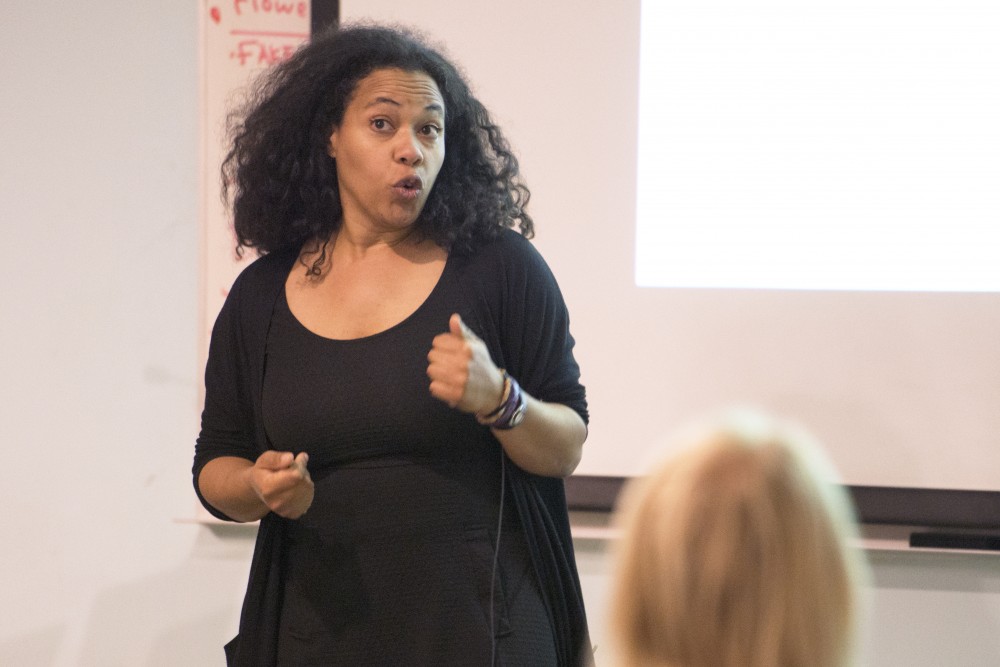Participating in the University of Minnesota Art Department’s Visiting Artists and Critics Program (VACP), international artist Sonia Barrett made studio visits with graduate students, held workshops and publicly spoke about her work while in Minneapolis last week. Her talk took place Thursday night at the InFlux Space at the Regis Center for Art.
Over the summer, Barrett co-led a study abroad trip with the art department where she met a number of students. After her introduction by term assistant professor Christina Schmid, students welcomed Barrett to the podium with whoops, hollers and an audible, “We love you Sonia!”
Barrett discussed how her work has evolved since she first began her career painting with watercolors.
“This career, this practice started actually in black art fairs,” she said. “I wanted to be a part of a black community. I wanted to sell my work and get my mandate from this community.”
Her watercolors enabled her to claim the title of artist, and as she began to navigate the new title, she considered newfound obligations.
“I felt very obligated to speak to slavery as an experience that was in my heritage,” she said. “In doing that, I had to face the fact of modern-day slavery. Slavery isn’t something that has an end-stop.”
Modern-day slavery is a recurring theme in Barrett’s work. She deconstructs domestic items, often furniture, and reconstructs them in different ways to speak to notions of oppression and liberation.
Today, Barrett is working to collaborate with others on addressing social and political events worldwide.
“I want to work with other people to find a strategy. I just feel the problems, the level of what is happening now, it’s just so huge that I can’t seriously contemplate doing something significant on my own at this point,” she said.
Reb Limerick, a third-year graduate student in the Interdisciplinary Art and Social Practices MFA program, had the chance to meet with Sonia during a one-on-one studio visit to discuss her work.
“It was so valuable to have her come in… having a perspective coming from the UK and other life experiences. Sometimes when you’re an American artist, you can kind of forget how much your work can be situated within the country and the time that you’re living in,” Limerick said. “It’s hard to see yourself from the outside. So [the studio visit] was really helpful.”
VACP brings a handful of artists to the university each semester.
“What I want is for students to get to see all sorts of ways of working, living and sustaining and being an artist,” said Monica Haller, VACP chair and assistant professor in the art department “It’s so important to see what’s behind the ideas and to get to hear people talk about what drives their work — what fuels it. There’s a lot of urgency and motivation, and at this moment in our country, it’s all the more important to hear what is making people do the urgent work that they do.”








